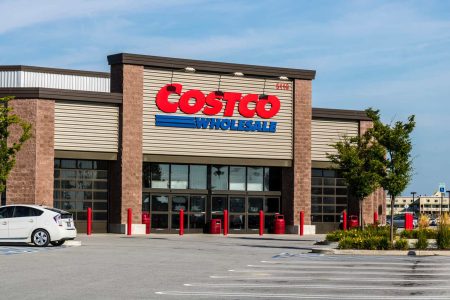Tenet Healthcare Corporation (NYSE:THC) Q1 2024 Earnings Conference Call April 30, 2024 10:00 AM ET
Company Participants
Will McDowell – VP, IR
Saum Sutaria – Chairman and CEO
Sun Park – EVP and CFO
Conference Call Participants
Kevin Fischbeck – Bank of America
Justin Lake – Wolfe Research
Stephen Baxter – Wells Fargo
Pito Chickering – Deutsche Bank
Jason Cassorla – Citi
Ben Hendrix – RBC Capital Markets
Josh Raskin – Nephron Research
Whit Mayo – Leerink Partners
A.J. Rice – UBS
Andrew Mok – Barclays
Sarah James – Cantor Fitzgerald
Cal Sternick – JPMorgan Chase
Brian Tanquilut – Jefferies
Ann Hynes – Mizuho Securities
Operator
Good morning. Welcome to Tenet Healthcare’s First Quarter 2024 Earnings Conference Call. After the speakers’ remarks there will be a question-and-answer session for industry analyst. [Operator Instructions] Tenet respectfully asks that analysts limit themselves to one question each.
I’ll now turn the call over to your host, Mr. Will McDowell, Vice President of Investor Relations. Mr. McDowell, you may begin.
Will McDowell
Good morning, everyone, and thank you for joining today’s call. I am Will McDowell, Vice President of Investor Relations. We are pleased to have you join us for a discussion of Tenet’s First Quarter 2024 Results, as well as a discussion of our financial outlook. Tenet’s Senior Management participating in today’s call will be Dr. Saum Sutaria, Chairman and Chief Executive Officer; and Sun Park, Executive Vice President and Chief Financial Officer.
Our webcast this morning includes a slide presentation, which has been posted to the Investor Relations section of our website, tenethealth.com. Listeners to this call are advised that certain statements made during our discussion today are forward-looking and represent management’s expectations based on currently available information. Actual results and plans could differ materially.
Tenet is under no obligation to update any forward-looking statements based on subsequent information. Investors should take note of the cautionary statement slide included in today’s presentation, as well as the risk factors discussed in our most recent Form 10-K and other filings with the Securities and Exchange Commission.
With that, I will turn it over to Saum.
Saum Sutaria
Thank you, Will, and good morning everyone. We have significantly accelerated the strategic transformation of our portfolio. In the first quarter of 2024, we closed the sale of nine hospitals for pretax proceeds of $4 billion. This enabled us to retired debt and substantially lower our leverage ratio, while continuing to invest in our leading ambulatory care program. As a result, Tenet is more capital efficient, profitable and value-based care enterprise. We are well positioned to deliver high-quality specialty care in the communities we serve and to deliver exceptional shareholder value.
Importantly, with our strong core performance, and the anticipated contributions from completed ambulatory M&A, we expect to essentially replace the lost EBITDA from the hospital asset sales in our run rate expectations. I’ll spend more time on our portfolio transformation in a minute. But first, a quick review of our quarterly results.
We carried significant momentum through the first quarter of 2024. Strong revenue growth supported by the continued recovery of utilization, as well as high acuity levels and favorable payer mix drove performance well in excess of our initial guidance. In the first quarter, we delivered net operating revenues of $5.4 billion. Consolidated adjusted EBITDA was $1.02 billion, which represents a 23% increase over the first quarter in 2023 and an adjusted EBITDA margin of 19.1%.
In terms of performance, let’s start with USPI. We had a great quarter with $394 million in adjusted EBITDA, representing 16% growth over first quarter 2023. Service line expansion, elevated acuity and favorable payer mix all drove the strong organic growth. Joint replacement surgeries continue to be an excellent source of growth for us and were up 21% over prior year. We also had an active start to the year in terms of our USPI development pipeline.
We are proud to have grown USPI to over 535 centers in what is still a highly fragmented market with meaningful new additions this past quarter. We expect these newly acquired centers to deliver approximately $80 million of EBITDA in the first 12 months of ownership. In addition, we expect to ultimately realize the synergized EBITDA minus NCI multiple of six to seven by [year three] (ph) for those centers. USPI’s de novo development activity also continues strong with nearly 30 centers currently in syndication stages or in construction.
We are pleased to deploy capital to provide more lower cost access points for the communities in which we operate that also generate very attractive returns. Turning to our hospital segment. Adjusted EBITDA grew 28% to $630 million in the first quarter of 2024. Same-store hospital admissions grew 4.2%, demonstrating the continued recovery of utilization that we saw last year.
Acuity levels remained strong within the first quarter of 2024 with revenue per adjusted admission up 8.8% over prior year. We have opened up capacity to meet demand in a number of our markets. In addition to the ongoing investment in our frontline workforce, we are proud to have recognized our many field supervisors, managers, directors and other leaders with incremental financial and professional development rewards for their contributions to our post-pandemic recovery in 2023. We strongly believe that these management layers are critical to successful recruiting and retention initiatives.
Additionally, we continue to invest in our high acuity specialty services. Our plans to open a new hospital in Westover Hills, San Antonio near the end of the second quarter remain on track this year. Over the balance of the year, we plan to allocate more capital into our existing markets for high-acuity service line development to further drive organic growth with strong returns on capital.
I’d like to take a moment to thank the special team of Tenet and Conifer colleagues who have worked tirelessly to respond to the cyber-security attack that took place at Change Healthcare in the early part of this year. We utilized Change in some, but not all of our own and our Conifer client hospitals, and we do not utilize it at USPI or with our physician business. As a result of the incident, the clearinghouse function and change, impacted the ability to send claims to many payers.
We have experienced some delays in near-term billings and estimate that this will only have a temporary impact to our cash flows that we expect to resolve over the course of 2024. All-in-all, our hospitals have had a very strong start to the year. Looking forward, we are raising our full year 2024 adjusted EBITDA guidance to a range of $3.5 billion to $3.7 billion, which represents an increase of $215 million or 6% at the midpoint of our range over our prior guidance, which was already quite effective. In order to ensure that we are clear, our increase in guidance reflects the structural increases in revenue reimbursement that we have earned that were not in our original assumptions for 2024, additions to our ASC portfolio and the impact of reductions in our hospital sales — hospital asset sales.
We are not addressing but also acknowledge the underlying organic outperformance in our business units during Q1 in our increased guidance at this stage. We are early in the year. We are very pleased with the demand that we are seeing in our network, and we will address this component of our expectations for the full year in the future. We are confident in our ability to deliver on these increased expectations.
Before I turn the call over to Sun, I’d like to spend some time discussing the progress we have made in our portfolio transformation. As I mentioned previously, the transactions that we have executed on — have established the dawn of a new era for Tenet. We have completed three very attractive hospital sale transactions, which have generated $4 billion in gross proceeds. Within these sales, we have maintained, and in most cases, enhanced a commercial service provision relationship with the buyer.
We expect these relationships will be an attractive contributor to earnings for years to come. We have a commitment to deleverage the balance sheet and have retired $2.1 billion in debt in the first quarter alone. At the end of the first quarter, our EBITDA minus NCI leverage ratio was approximately 3.5 times, a significant decrease from approximately 7 times that we had at the start of 2018. We have demonstrated capital and financial flexibility this year by allocating $450 million of capital towards our top priority, attractive expansion of our ambulatory business.
Additionally, we have returned almost $280 million capital to shareholders via repurchases in the first quarter alone. While our mission to provide quality, compassionate care in the communities we serve has not changed, we are essentially a new company. Our repositioned portfolio of businesses is more predictable and capital efficient with attractive margins and free cash flow. The operational discipline that we have instilled in each of our facilities, enabled by an analytics-driven culture is producing differentiated results.
Our balance sheet, which was once a challenged part of the Tenet’s story has been deleveraged. This provides us with a strong foundation and a significant amount of capital and financial flexibility for the future. We feel well-positioned to drive enduring value for our patients, our business partners and in turn our shareholders.
And with that, Sun will now provide a more detailed review of our financial results. Sun?
Sun Park
Thank you, Saum, and good morning, everyone. Our financial results in the first quarter represent a strong start to the year with adjusted EBITDA coming in well above our guidance range. In the first quarter, we generated total net operating revenues of $5.4 billion and consolidated adjusted EBITDA of $1.02 billion, a 23% increase over first quarter 2023. These results were driven by strong same-store revenues, continued high patient acuity, favorable payer mix and effective cost controls.
Now I would like to have key items for each of our segments, beginning with USPI, which again delivered strong operating results in the first quarter. USPI’s first quarter adjusted EBITDA grew 16% compared to last year, and its adjusted EBITDA margin continues to be very strong at 39.6%. USPI delivered a 6.4% increase in same-facility system-wide revenues compared to first quarter of 2023, with same-facility system-wide net revenue per case, up 6.8%, driven by high levels of acuity. This was partially offset by a modest decrease in surgical case volume of 0.4%, in-line with our expectations.
As we noted last quarter, we are expecting growth in cases to build over the year, due to the significant volume performance we saw in the first quarter of 2023. Now turning to our hospital segment. First quarter hospital adjusted EBITDA grew 28% and with adjusted EBITDA margins up [240] (ph) basis points over last year at 14.4%. First quarter same-hospital inpatient admissions increased 4.2% and revenue per adjusted admission grew 8.8%, demonstrating strong payer mix and continued high acuity levels.
In terms of continued expense management, our consolidated salary, wages and benefits were 43.2% of net revenues in the first quarter, which was substantially lower than 45% in the first quarter of 2023. And our consolidated contract labor expense was 2.9% of SW&B, a material reduction from 6% in the first quarter of ’23. The reductions in costs reflect the disciplined approach that we take towards labor management.
In addition to the strong operating performance in our hospital segment, our first quarter results also include $88 million of additional revenues associated with CMS’ approval of increased funding for the Michigan Medicaid Hospital Rate Adjustment Program, or HRA for short. About half of this amount is related to the fourth quarter of 2023. We are the leading safety net provider of healthcare services for the people of Southeast Michigan and the Greater Detroit area, and these funds will support the care that we provide to this community. Excluding this additional funding, revenue per adjusted admissions still grew 6.1%, a very attractive result. We’ve had a strong start to the year in both USPI and hospitals, reflecting strong fundamental same-store revenue growth and disciplined expense management.
Next, we will discuss our cash flow, balance sheet and capital structure. We generated $346 million of free cash flow in the first quarter. And as of March 31, we had nearly $2.5 billion of cash on hand with no borrowings outstanding under our $1.5 billion line of credit facility. We had an active first quarter on the M&A front as well. We invested $450 million for USPI acquisitions at attractive multiples. And as Saum mentioned, we expect to deliver enhanced post-synergy returns on these acquisitions over the next few years. And finally, during the first quarter, we retired $2.1 billion of senior secured first lien notes that were previously due in 2026 and repurchased 2.8 million shares of our stock for $278 million.
Our leverage ratio as of March 31, 2024, was 2.79 times EBITDA or 3.46 times EBITDA less NCI, a substantial improvement from year-end. Reflecting the proceeds that we received from our hospital divestitures, as well as our outstanding operational performance. I would note that we have not yet made tax payments on the gains from the hospital sales and the impact of these tax payments are not reflected in our current leverage ratios.
Finally, we have no significant debt maturities until 2027 and all of our outstanding senior secured and unsecured notes have fixed interest rates. In the aggregate, we have made substantial progress transforming our balance sheet and capital structure. We are well positioned with a high degree of financial flexibility and cash flow generation to support our capital allocation priorities in the years to come.
Now let me turn to our outlook for 2024. For 2024, we now expect consolidated net operating revenue in the range of $20 billion to $20.4 billion. As Saum mentioned, we’re raising our 2024 adjusted EBITDA outlook range by $215 million to $3.5 billion to $3.7 billion, reflecting the strong start of the year. The $250 million increase is driven by the following structural changes to our guidance. First, $209 million of incremental net revenues associated with the Michigan Medicaid HRA program.
Second, $30 million of incremental EBITDA from ASC acquisitions that we made in the first quarter, above what we had previously assumed in guidance. And finally, a year-over-year headwind of $24 million in the sale of two California hospitals to Adventist, which was not previously reflected in our guidance. On a normalized basis, our full year ’24 adjusted EBITDA is now expected to grow 13% over last year at the midpoint of our range.
Finally, we would expect second quarter consolidated adjusted EBITDA to be in the range of $835 million to $885 million and we anticipate that USPI’s EBITDA in the second quarter will be 23.5% to 25% of our full year USPI EBITDA guidance at the midpoint. Turning to our cash flows, we now expect free cash flow in the range of $950 million to $1.2 billion, an increase of $75 million at the midpoint. This range includes the payment of $687 million in net taxes related to our announced divestitures.
Adjusting for these tax payments, this represents $1.762 billion of free cash flow at the midpoint of our outlook which demonstrates continued strong performance even after the loss of EBITDA from the divested hospitals. As we stated last quarter, our cash flow performance has improved substantially over the past several years and we continue to demonstrate the ability to generate this cash flow while also deleveraging our balance sheet, making investments in our businesses and executing on key growth plans.
And finally, as a reminder, our capital deployment priorities have not changed for 2024. First, we will continue to prioritize capital investments to grow USPI through M&A. Second, we expect investee hospital growth opportunities, including our focus on higher acuity service offerings. Third, we will evaluate opportunities to retire and/or refinance debt and finally, a balanced approach to share repurchases depending on market conditions and other investment opportunities.
We are pleased with our strong start to the year and the significant progress we have made with the portfolio. We are confident in our ability to deliver on our increased outlook for ’24, as we continue to provide high-quality care for those in the communities we serve.
And with that, we’re ready to begin the Q&A. Operator?
Question-and-Answer Session
Operator
Thank you. We will now be conducting our question-and-answer session. [Operator Instructions] Our first question comes from the line of Kevin Fischbeck with Bank of America. Please proceed with your question.
Kevin Fischbeck
Great. Thanks. So overall, I guess quarter looks really good. [It’s actually] (ph) number that still kind of looks a little bit off to me is just the same-store case growth within USPI. I know you guys had a tough comp. But is there anything that you would point to that kind of indicates that return on volume as the year goes on? You guys sound confident in building. Is there anything on case for surgical day or trends in the quarter or something that you would point to that kind of say we’ve got good visibility that, that volume will be accelerate and build as the year goes on. Thanks.
Saum Sutaria
Yes. Thanks, Kevin. So first of all, let me just address the quarter. I mean this is what we expected, right? I think in the past I had said pretty clearly that we expect volume to build through the year or as the year goes on. So this is no different than what we expected. It is not worth it, it’s a footnote, so I’ll just be brief about it. I mean there are a couple of centers, handful of centers that were shut down due to weather issues.
We were essentially flat at the end of the day when you really look at what was same-store operating, which drove that number. But the longer-term implication of the result is actually very important in our minds in the way we were looking at the year because with last year’s volume growth being so strong I think they were all — and by the way, even for us in the business doing this bottoms up, there were always questions about, was this volume simply deferred care that was going to be one-time and then actually there would be a rebasing significantly downwards.
And we didn’t think that based upon our planning in the business last year when we went through the bottoms-up planning, and we are delighted that, that’s correct which is to say that having the business after a year where we grew more than twice what our typical growth rate would be, remain flat and have an opportunity to build off that floor suggests significant fundamental strength and tailwind in the demand for USPI type of services as opposed to 2023 having just been a catch-up year that was going to go away.
When you look under the surface of our volumes, all of the major service lines that we focus on, including the strength we saw in GI, experienced a bit of further growth. So the volume that was down a little bit was more in low acuity pain type procedures. But we saw orthopedics, ENT, GI, other bone and joint care that we are focused on shoulders obviously, the attractive urology partnership we have, all growing. So I think, the fundamentals look good. The comps are hard through the year. We think they get a little bit better as the year goes on. But our fundamental belief is that the ability to grow off of last year is really what the first quarter affirmed as opposed to that have been just purely one-time deferred activity in ’23. We view it as a good news story.
Kevin Fischbeck
Okay. Thanks.
Operator
Thank you. Our next question comes from the line of Justin Lake with Wolfe Research. Please proceed with your question.
Justin Lake
Thanks, good morning. Just a couple of quick numbers questions. First, in — the first quarter, obviously, was really strong, and I appreciate the conservatism on not kind of assuming that continues through the year. But just want to make sure we understand how much better was it versus your internal forecast? When you adjust for everything going on in terms of deals and the ASC purchase and the asset sales? And then secondly, post the asset sales, I think you had said that you were going to pay down debt with those proceeds. Is that still the intent? And if so, can you give us an idea of where you think those leverage ratios kind of — would be on a normalized basis at the end of the year post the debt repayments? Thanks.
Saum Sutaria
Hi, Justin, it’s Saum. I’ll take the first one, I’ll pass to Sun. The results — the quarter results were significantly better than our expectations for the quarter, and that’s true in the hospital segment and the USPI segment, both demonstrated. So if you just start with USPI and even building off Kevin’s question, the net revenue strength was substantial. And that is related to acuity and pricing, obviously which drove a net revenue result above what our typical guidance expectations would be. So we felt pretty good about that and I think I’ve covered that piece of it. On the hospital side, similarly, the volume strength was good, the mix was good, the acuity was up again over this period of time. And I’m referring to it in the absence of some of the reimbursement or supplemental payment changes in the absence of that, it was strong across the board. So we thought the core performance was quite a bit better than we expected for the quarter.
Sun Park
Thanks Saum. And then, Justin on your second question around debt and leverage, maybe I’ll take it in a reverse order. So you’re right, as I mentioned in my script, the leverage ratio is — as of March 31, we’ll have to — will probably change, right, as you add — as we pay down debt, and we mentioned about $687 million related to that tax, excuse me. And then in terms of your [run] (ph) ratios, we’re not prepared to address that specifically yet. But as you can imagine, based on our guidance, we feel comfortable with the ranges that we’re expecting. It will depend ultimately on the eventual capital allocation decisions that we made throughout the course of the year.
And as I said in my prepared remarks as well, our capital allocation strategies and priorities have not changed. And then finally, in terms of debt paydown, our hospital divestitures, as Saum mentioned, have done a great job of deleveraging Tenet. In terms of actual tax, we paying down debt, we paid down our 2026 note, as we just mentioned. And then our next note is really February of 2027, which is almost actually three years from now, right? So we’ll obviously — we stay committed to paying down debt but we’ll take our time and look at the optimal way to execute on that. Thanks for the question.
Operator
Thank you. Our next question comes from the line of Stephen Baxter with Wells Fargo. Please proceed with your question.
Stephen Baxter
Hi, thanks. For the hospital business, it would be great to get some more color on the sources of acuity and payer mix in the quarter. I guess what’s driving that? And maybe how much of it is coming from the exchanges and any kind of quantification on where your exchange [mix sits] (ph) after the significant growth we’ve seen over the past couple of years would be great. Thank you.
Saum Sutaria
Yes, sure. A few thoughts for you. One is that I think it is important to note that the volume strength was very broad-based. Different markets — we’ve obviously talked historically about markets that recovered more quickly and less quickly from COVID, but the volume strength was pretty broad-based. I also indicated that we are now beginning to add some capacity back thoughtfully in different markets, which we’re pleased to see that we can accommodate without eroding our cost performance. So an important part of our story for the quarter was maintaining our cost discipline even as we added the capacity, which helped with the margin expansion.
The service line acuity, especially the procedure-based work was good. We saw a lot of strength in a number of markets in high acuity kind of ICU care type of medical admissions. And then to your last point, which I’ll spend a minute on, we did see significant strength in the exchange population over prior year. And I think, this is probably — and by the way the Medicaid business was down a little bit. So I think, some of this is related obviously to the short-term phenomenon that we are probably seeing a bit from redeterminations and the effect they’re having. Now for us, I’ve pointed out before, we’ve had a broad-based contracting strategy to be in network with exchange plans around the country in our markets. And so I think, that probably helps us with respect to the ability to serve those patients for those that pick up exchange coverage.
Operator
Thank you. Our next question comes from the line of Pito Chickering with Deutsche Bank. Please proceed with your question.
Pito Chickering
Hi, good morning and great job on the quarter. On the hospital segment, margins on the last quarter were guided to be about 10.9% at the midpoint. And now the guide to be 12.1%. So excluding the 60 basis points of margin improvement from Michigan, can you help bridge what sort of made those margins sort of go up? Was it the — asset sales in California, just help bridge us sort of that margin delta. And then a quick numbers question for you. You talked about the [indiscernible] of EBITDA coming from these asset sales. What was the revenue contribution for ASCs for the year? Thanks.
Saum Sutaria
I’ll take the first one. Pito, and thanks for the support. I — the margin strength is — I mean, it’s multiple fold. I think you covered many of the areas there. Obviously, I would start with the importance of maintaining cost discipline, which we have done. The second is just volume and improvement in capacity utilization improves margins. The third is related to the mix and the payer mix, in particular, both Medicare and commercial business, including commercial exchanges being stronger in the quarter.
And then obviously, there are — the service line opportunities where we are focused, which for obvious reasons, can be accretive to margins given some of the high acuity work that falls into those categories. So those are the things that really drove the performance. Because of the balance on the asset sales, higher significantly, some of them being significantly higher-margin markets than others. I’m not actually sure that the — and to be honest with you, would have to go look for sure. But my general impression from what I looked in the past is, I’m not actually sure the divestitures where that accretive to margin.
Go ahead, Sun.
Sun Park
Yes, that’s correct. And Pito on your second question about the ASC acquired revenues. As Saum mentioned, the first 12-month equivalent of EBITDA is about $80 million. We obviously in our guidance have nine months of that in fiscal ’24. And I would assume sort of standard USPI EBITDA margins for that book of business.
Pito Chickering
Great. Thanks so much.
Operator
Thank you. Our next question comes from the line of Jason Cassorla from Citi. Please proceed with your question.
Jason Cassorla
Great. Good morning, thanks and congrats on the quarter. I just wanted to really quickly ask about the free cash flow expectations, EBITDA up $200 million. Free cash flow seems only to be up $100 million. What’s driving that differing outlook? Is it just related to the divestiture and the nuances that move with that or timing elements, just to make sure we’re good on that on the free cash side. Thanks.
Sun Park
Hi, Jason, thanks for the question. This is Sun. Yes, I would say with the EBITDA, we obviously tax effect that addition. And then as we mentioned, we have additional taxes that we expect to pay on the California two hospital divestitures as well. So those are probably the two most important factors there. Thanks for your question.
Operator
Thank you. Our next question comes from the line of Ben Hendrix with RBC Capital Markets. Please proceed with your question.
Ben Hendrix
Great. Thank you very much. Just a quick question on the medical fee headwind that you called out. Just wanted to see how that has trended quarter-to-quarter, trended versus your expectations and how we should think about that through the end of the year. Thank you.
Sun Park
Yeah, thanks for the question. On the professional fees. So as we said before, for full year ’24, we’re pleased to see moderation in the rate of growth and change here. We’re still assuming about 8% to 10% range for fiscal ’24 guidance. I will also add that in Q1, we saw it would be flat sequentially versus our last quarter. And then for Q1 ’24 versus Q1 of ’23, we saw about 9% to 10% increase. So thanks for your question.
Operator
Thank you. Our next question comes from the line of Josh Raskin with Nephron Research LLC.
Josh Raskin
Hi, thanks. Good morning. Can you talked about Detroit Medical Center and specifically of the new sub payment program changes the way you think about that market. I think it might be helpful to hear about capital projects that have come online for DMC and then if your plans change going forward in terms of investment? And then just lastly, on the numbers, is that still low to billions in terms of revenue?
Saum Sutaria
Hi, Josh. So the Detroit Medical Center is a very large multi-asset complex academic health science center that kind of goes all the way from the center of Detroit all the way out into the suburbs with multiple hospitals and includes the Children’s Hospital of Michigan and the Rehabilitation Institute of Michigan, both of which are facilities that have not just statewide, but regional draw. So it’s a large complex academic health science center across a pretty broad geography, multiple trauma programs, et cetera.
Now the other thing that the Detroit Medical Center is importantly for that community is the largest safety net provider in Southeast Michigan in Detroit, in particular both for the under and uninsured in that community. So there, the Detroit Medical Center has always had multiple objectives in terms of the patient population that it needs to continue to serve on a broad basis.
And our strategy there has been to invest in accomplishing all of those missions together. We have been working on improvements in the supplemental payment programs in the state for years. This doesn’t really come out of the blue, if you will for us in the sense that a lot of effort has gone in among multiple stakeholders, including the leaders at the DMC and working with the state, on finding ways in order to help the portion of the mission that provides increasing access and access to care for the under and uninsured portion of the mission at the DMC. And I think, what we see here in the improvements essentially brings Michigan to par with the way other states have managed ensuring that, that access continues to be made available for that population.
So your question on how we look forward at the DMC is one that we’ll address in the market over time. But again, I would point you back to the comment that I made that we have always operated the DMC and made investments to focus on being successful in the multiple missions. I think, what changes is more the return that we generate from those investments improves more so than there’s going to be some wholesale change in our strategy.
Josh Raskin
And the revenue side?
Saum Sutaria
We don’t report on the revenue side of our individual markets, and I’m not sure that there is any reason to do that here. Thanks.
Josh Raskin
Okay.
Operator
Thank you. Our next question comes from the line of Whit Mayo with Leerink Partners. Please proceed with your question.
Whit Mayo
Thanks, good morning. Maybe you hit on some of this, but the 45 centers that were acquired, can we just maybe get a little bit more color on those, not sure if there’s a back story, I presume this is a larger transaction? Are these in hospital markets, potential JV partners, the mix? Just any additional color would be helpful. Thanks.
Saum Sutaria
Yes, no problem. Thanks, Whit. Yes, the 45 centers comprise centers all across the nation. The vast majority of them are new markets to USPI, places where we don’t have necessarily centers today, a broad base of — there’s orthopedics, there’s GI, there’s ophthalmology. I mean typical service lines that you would end up seeing in the ambulatory space. I would say, that some of the centers have tightly affiliated partnerships with physicians, some of the centers are — and in some cases, health systems. And some of the centers are more, what I would describe as stand-alone stamp centers with independent groups that have over the time — over periods of time come together, bought equity and created a partnership that we bought into. I believe in all of the centers we bought up to consolidating positions. So there is “no buy up” strategy that will be required in these centers in the future. I don’t know, I’ll stop there. I think that covers it.
Whit Mayo
Appreciate that. Thanks.
Operator
Thank you. Our next question comes from the line of A.J. Rice with UBS. Please proceed with your question.
A.J. Rice
Hi, everybody. It looks like in your bridge that you are assuming organic growth in the ambulatory business of about EBITDA growth of about 4%. Obviously, as you said you’ve got a little tougher comp perhaps this year on the case line side which you’re still expecting that to be slightly positive. I guess just given the strength of the revenue per case that you saw in the first quarter. Is there any reason — is that a conservative number? Is there any reason to think that your revenue per case, given the investment and mix, et cetera, that you’ve done would start to moderate. And then I might also on the USPI ask, a lot of the peers are talking about this calendar effect at the end of the first quarter, Easter-Spring break that maybe hit in late March and affected some of the elective outpatient-oriented procedures. Did you see that? And do you have any early read on April if you did?
Saum Sutaria
Yes, A.J. It is — just a couple of things. Look, we have a lot of moving parts and pieces this quarter, including things impacting our guidance. So what we ended up doing was increasing our guidance to be consistent with the structural revenue and asset ownership, both additions and subtractions to the portfolio that we could forecast looking ahead to 2024. Look, as I said, we are really pleased with the demand we are seeing across the board in the businesses. We recognize the core underlying outperformance net of all those other items. And we haven’t really touched our guidance to acknowledge that performance yet. Again, lots of moving parts and pieces.
I think, with the underlying performance we’ll come back and address that on future calls. We’ll hopefully be in a position where we really need to address that on future calls. But there’s nothing in the environment right now that we are seeing that is concerning. And again, I would say, up to today, we are pleased with the demand we are seeing in the business.
A.J. Rice
Okay.
Saum Sutaria
The calendar effect question — I don’t know, if you want to address that Sun. I mean — yes, I mean, of course, we spend a lot of time, in particular, because USPI functions on a workday, weekday — workday type of schedule focused on those issues from year-to-year. It does cause some effect on the business and the volumes that are there. So we’re — I guess I would say we’re a little bit used to it that, that happens. And yes this year, it did have some effect in that arena.
I would reiterate the longer-term message around the volumes. We are really pleased with the fact that what we saw in the first quarter helped to give us even more confidence that ’23 was not just a one-time rebound year. It was a year in which we can build upon that volume strength, unnaturally high volume strength from last year. And as the year progresses, look to build volume growth off of what were some very tough comps from ’23. But again, fundamentally, the first quarter gives us a great sense of relief that we’ve established that there is strength and the tailwinds for this business are real.
Operator
Thank you. And our next question comes from the line of Andrew Mok with Barclays. Please proceed with your question.
Andrew Mok
Hi, good morning. Just wanted to follow up on the 45 ASCs that you acquired in the quarter. I think you said in your prepared remarks that you are expecting $80 million of EBITDA contribution from these centers. When I look at the acquisition and development activity line in your ASC bridge, I think the revision was closer to $30 million over three quarters. I’m not sure if there was any contribution quarter. So if so — that implies a pretty material step-up in 1Q ’25. Just want to make sure I’m understanding about this business and the cadence of synergies that should materialize in 2025. Is that the right way to think about it? Thanks.
Sun Park
Andrew, I’ll try to address the different parts of your question. So first of all, in Saum’s comments, he mentioned $80 million that is a first 12 months of ownership number. So in our ’24 guidance, we had nine months contribution. And I would assume that as happening in Q2 through Q4. The other piece I’d say, is that when we posted original guidance in our last call of $71 million of acquisition and development activity for USPI.
Obviously, some of the activity that we accomplished in Q1 goes towards that. So what you are seeing with our new number of 101 in acquisition development activity for USPI calculates that and assumes that our parts, a lot of the acquisition of top in Q1 goes towards the original guidance. So that’s part one. Part 2 is we won’t comment on 2025 impact yet. But what we feel confident in is that over the long term, over the next three year outlook that we will work hard to achieve 6 times to 7 times multiple EBITDA minus NCI of that acquisition. Thanks for your question.
Saum Sutaria
Yes. This is an attractive portfolio of assets. Again, diversity of service lines, nice opportunities to realize improvement in performance over the first — the first three years that will build and grow earnings and importantly, EBITDA minus NCI as well. And as I indicated, all consolidated from the beginning, not creating a buy up set of — a work plan set related to buy-up sell. So we like the portfolio of assets that we picked up and will digest over the course of the year.
Operator
Thank you. Our next question comes from the line of Sarah James with Cantor Fitzgerald. Please proceed with your question.
Sarah James
Thank you. So a couple of times today, you’ve touched on your strategy of growing off of a new higher base for USPI volume. I’m wondering if you’ve done any analysis on that to see were there just stronger market trends? Or did you guys gain share? And if it is share gain, are you able to tell, was that due to partnerships and referrals or growing catchment area, sort of what was behind it? Thanks.
Saum Sutaria
Yes. Thanks, Sarah. So a couple of things. I mean, the ASC environment is not necessarily as a general market as data-rich as some of what you see on the hospital side, right? So we too have to use proxies to understand and forecast where we are going with the business. Obviously, the number one thing we do is we do bottoms-up center-by-center business planning every year that is built upon our understanding of our strategies, how successful they are pulling the physician partners, et cetera. I mean, it’s a pretty simple but relatively comprehensive process.
And when you look at that — and then you also, as I indicated in our fourth quarter call, just simply measure how busy some of these individual physicians were in 2023 and I think I may have even noted some of these people worked incredibly hard to take care of patients at a level of productivity that we have not seen them deliver in prior years. Of course, you are left with the question despite our best efforts at forecasting, whether or not a significant portion of what we saw last year, especially being post-pandemic was simply one-time deferred care. So that’s why I elaborate on it because — in the first quarter, we sort of knew from our bottoms-up planning that we believe volume growth would build over the year.
Of course, there is always a risk that planning wasn’t entirely accurate. And there would be a volume retreat based upon deferred care being the real reason for the growth last year. And that’s why I commented on it because I’m not as focused on quarters individually. I’m focused on the broad-based tailwinds that drive USPI and our ability to drive earnings growth over a longer period of time. And that’s maybe why I elaborate on that point a few times, as it gives us more confidence that we are building solidly for the long-term.
The only other statistic that we are able to look at across the Board is our rate of addition of new physicians and being able to measure how they ramp up. And so one of the reasons we had a little bit of confidence this year that we would see growth as the year went on was despite the busy year last year, we did add physicians to the USPI portfolio. And it usually takes them nine months to 18 months to ramp into their comfort level in an ASC. And so we thought, okay, based upon those additions, we ought to see some growth above and beyond where we were in the latter part of the year. So I don’t know, maybe that’s more color than you wanted. But — that’s kind of how this — how the planning for this business shapes up.
Sarah James
That’s very helpful. Thank you.
Operator
Thank you. Our next question comes from the line of Cal Sternick with JPMorgan Chase & Company. Please proceed with your question.
Cal Sternick
Thanks. I wanted to ask about the 45 centers. Were there any large portfolio deals in that quarter in that part of the 45? I know you mentioned that the additions were pretty broad-based across markets. And just any other color on sort of what the acuity or case mix is for those centers. And maybe more broadly, just what you’re seeing in terms of the M&A pipeline?
Saum Sutaria
Yes. Hi, Cal. So a few things. One, the centers were, in fact as I said, broad-based biographically, majority of the centers did come through a single transaction for multiple centers. We just closed the deal, right? So assessing the case mix and the acuity and all that stuff, other than what we learned in diligence that gave us comfort is not really something I’m prepared to talk about in any great detail. Our priority and focus, of course, is continuing to acquire assets at attractive multiples, adding value to them from a quality, safety, compliance, growth standpoint to increase access to lower-cost care in the communities in which we acquire them using the USPI management skills and ultimately improving the returns to the levels that Sun and I described on — in a typical fashion by year three.
We think these things will be very nice additions to the earnings for USPI. In terms of the broader M&A pipeline and de novo pipeline, they both remain strong. We anticipate continuing to progress through that agenda as the year goes on.
Cal Sternick
Great. Thanks.
Operator
Thank you. Our next question comes from the line of Brian Tanquilut with Jefferies. Please proceed with your question.
Brian Tanquilut
Hi, good morning. Congrats on a solid quarter. Maybe some — my question for you. As I think about revenue per case related to all the comments you made on USPI, right? I mean, obviously, it was strong this quarter, but if we think about the mix of ortho continue to grow, the impact of the new ASCs that you just acquired, and maybe the comment you made on payer rate bumps, how should we be thinking about your view on the sustainability of — or the right level of revenue case growth, number one. And maybe some color you can share with us on the payer rate comment you made earlier in your prepared remarks. Thanks.
Saum Sutaria
Yes, sure. Well, I mean I think the main driver of revenue per case is obviously the mix acuity, right? I mean it is the case mix and acuity and strategically, our objective is to grow that. It’s also important just because the more that we grow in that dimension, the more we are creating value for the system by reducing the cost of similar care that could be done in a more expensive setting, which is obviously important to our payer and government reimbursement stakeholders so that’s how we think about that and why we are focused on that. The exit of low acuity business helps that statistic in net revenue per case. But it also, over time helps us create some more capacity in our ASCs. As I’ve talked about, it is always a headwind to same-store growth. When you lose or move out or whatever, low acuity pain cases where you can do 10 of them at the same time, you can do one joint surgery that is what it is and we obviously are going to continue down the path of our service line mix improvements that we believe in, regardless of the impact on same-store, it is obviously our objective to continue to build the same store. However, as we have said in our guidance.
From a mix perspective, even in the ASC business, I think that some of the benefit of the exchange population growth, we are seeing that flow through. It is not just the hospitals. We’re seeing that flow through in the ASC business. What’s different in the ASC business is there, isn’t as much Medicaid. So you are not seeing — you’re not seeing the reduction necessarily like you would in the hospital segment and the growth in the exchange business, but you are seeing the exchange segment growth on the ASC side.
Brian Tanquilut
And it’s not just the impact of the acquisitions. Does that dilute it? Or how should we be thinking about that?
Saum Sutaria
Yes, that’s a good question. And I mean other than providing the numbers around, I mean, again, we just closed on a lot of these centers in the past quarter, and most of them frankly, were towards the end of the quarter to Sun’s point around they really are an impact in Q2 through Q4 and as opposed to having had any impact in Q1. The centers we acquire generally speaking, will be lower margin and dilutive to earnings from a margin standpoint until USPI fully implements its program of improvements, which is how the year three multiples can be forecast over time that obviously comes with earnings improvement and therefore margin improvement. And so that’s definitely the case.
We haven’t gotten into them enough to know whether there is some that we are going to need to do some partners restructuring or other things. We’ll provide more visibility as we get into it next quarter in terms of what impact it may have on volumes, earnings, any refinement to the earnings. But we feel pretty good about the projection that we’ve given on these centers for the first 12 months of EBITDA and also what the long-term impact or benefit to the company will be.
Brian Tanquilut
Okay, thank you.
Saum Sutaria
Thanks.
Operator
And our next question comes from the line of Ann Hynes with Mizuho Securities. Please proceed with your question.
Ann Hynes
Hi, good morning. So I just want to focus on divestitures. Obviously, they’ve been a very nice source of debt repayment on the acute care side. How do you view divestitures going forward? And can you remind us what goes into decision-making on whether to strategically keep or divest a hospital or a market? Thanks.
Saum Sutaria
Yes. I mean, — and I appreciate the question. I think that strategically, our choices about divestitures are dependent upon a few different things. Obviously, one is — does it impact our overall corporate strategy in a positive or negative way or do we have the ability to provide leadership and ongoing growth in the markets that we were serving based upon our business model, capital needs and other things that those assets may have and what we might forecast the return on those capital investments may be versus other things that we could spend the money on. And then finally the ability to generate proceeds that fully value what we have built in these assets, which is again what we were focused on because these assets underwent a lot of work over the last five years and we wanted to ensure that we captured full value for them in our transaction. That’s how we think about those are the criteria that we have thought about.
We are — as I’ve said before, we’re very comfortable with the portfolio we have today and the positions that we hold today and our ability to build and grow in the markets — in the markets that we are in.
Operator
Thank you. And we have reached the end of the question-and-answer session. And this also concludes today’s conference, and we do thank you for your participation, and you may disconnect your lines at this time.
Read the full article here
















